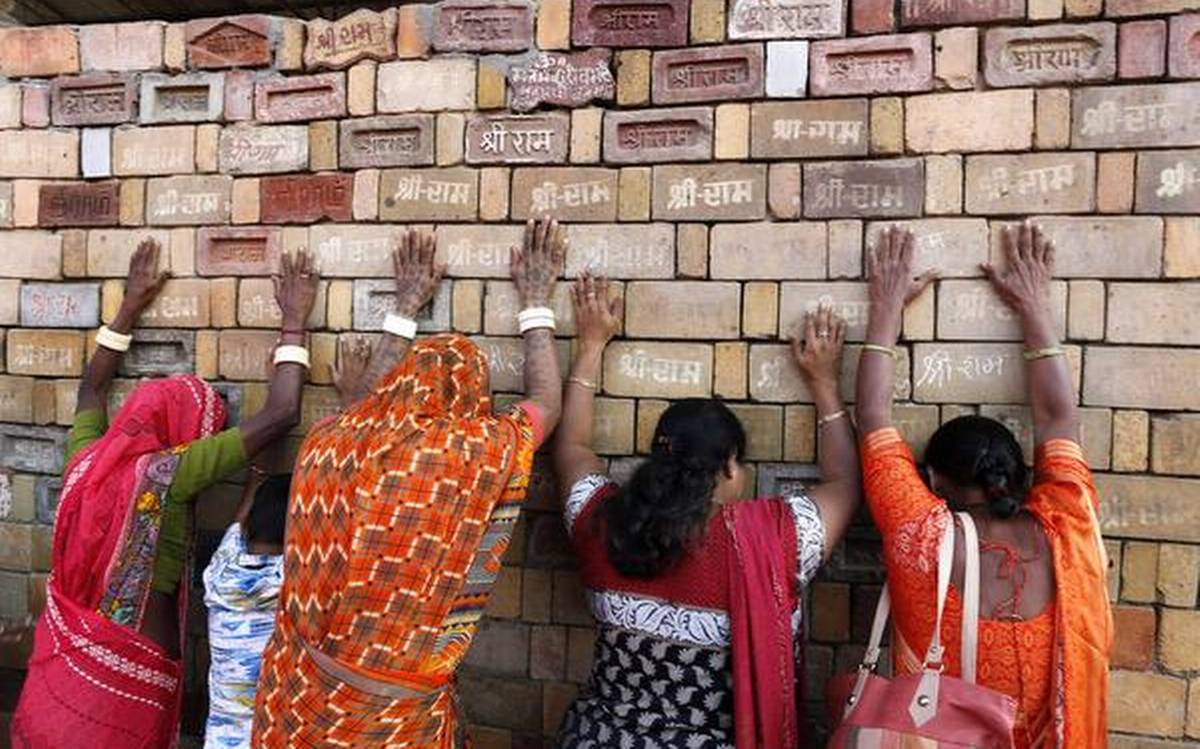
Prayers held at Ram temple site, but laying foundation for construction delayed
Priests conducted special prayers at a Shiva shrine at the Ram Janmabhoomi site at Ayodhya but stopped short of symbolically launching the construction of a Ram temple, contrary to an announcement made earlier this week.

Priests conducted special prayers at a Shiva shrine at the Ram Janmabhoomi site in Ayodhya, but stopped short of symbolically launching the construction of a Ram temple, contrary to an announcement made earlier this week.
Mahant Kamal Nayan Das, who participated in the ‘rudrabhishek’ ritual at the Kuber Tila shrine, said he prayed for an early beginning of construction of the Ram temple.
Kamal Nayan Das is considered the spokesperson to Mahant Nritya Gopal Das, who heads the Ram Mandir trust which has been charged with the construction of the temple after the Supreme Court verdict last year.
On Monday (Jun 8), Kamal Nayan Das had announced that the rudrabhishek will be followed by beginning work on the foundation of the planned Ram temple.
“This religious ceremony will last for at least two hours and after that the construction of the Ram Mandir will start with the laying of the foundation for the mandir structure,” he had said.
Related news | PM lists Art 370 abrogation, CAA, Ram temple settlement among key achievements of 2nd term
However, on Wednesday (Jun 10), no member of the Shri Ram Janmabhoomi Teertha Kshetra Trust was present when he went to the Shiva shrine to offer prayers as a representative of Mahant Nritya Gopal Das.
The mahant said he was accompanied by priests from Mani Ram Chawni temple, the religious seat of Nritya Gopal Das whom he was representing.
“Along with the disciples of the Mani Ram Chawni temple, I went to the Ram Janmabhoomi premises and performed the rudrabhishek and prayed to Lord Shiva for an early start to the temple’s construction,” he said.
He had earlier said the ritual follows the tradition set by Lord Ram, who prayed to Shiva before launching an attack on Lanka.
Last November, the Supreme Court settled the Ram Janmabhoomi-Babri Masjid land dispute, ruling in favour of construction of a temple at the site by a government-appointed trust.
It also ordered that an alternative five-acre plot must be found within Ayodhya for a mosque to replace the Babri Masjid, demolished in 1992 by kar sevaks claiming that a Ram temple originally stood at the same spot.
Related news | VHP’s Ram temple model could be altered to increase structure’s height
In March, the Ram Lalla deity was ceremoniously moved from the makeshift temple at the site to a new spot, clearing the way for the construction of the temple.
On May 11, earth-moving machinery was deployed for levelling the site.
Amid these developments, a section of people, including experts, had constantly maintained that the disputed land belonged to neither Hindus nor Muslims, but pointed to Buddhist heritage.
This claim was recently brought to the fore when idols of gods and goddesses, along with a few other statues were unearthed from the Ram temple excavation site. Netizens said the statues clearly indicated that the land had once been occupied by Buddhists, and that the Supreme Court verdict had been biased in the first place.
However, these claims have not received much response from the Centre or the Supreme Court.
(With inputs from agencies)

